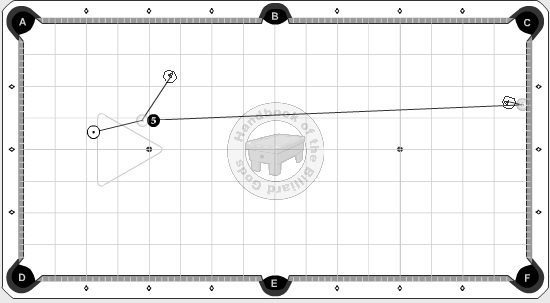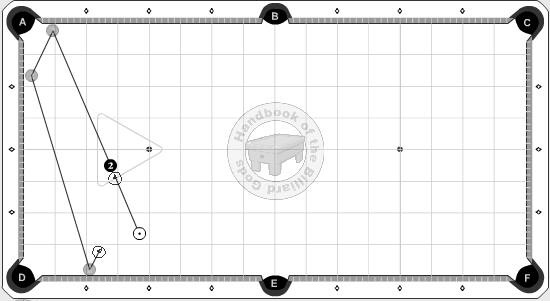(This is today’s bit of advice from the book Safety Toolbox.)
There are situations when it is important to control where the object ball stops. To accomplish this and do it well, set aside concerns about the cue ball (except to prevent scratching) and concentrate attention on the path and distance that your target object ball travels.
In an 8 Ball game, move balls to become pocket blockers and otherwise obstruct your opponent. Other options are to move a single ball out of a cluster. In 9 Ball, send the target ball behind a wall of balls or set up an effective distance or bad angle safety.
This ability to send object balls to planned locations allows the development of complex game strategies and tactics. The more you use it, the more experiences you gain and the more options that can be considered.
It is important to place the object ball into the final location of the exercise. At first, work to get the object ball into a diamond square. Then work on a half diamond square target location. Use a Post-It sheet to mark the target area.
One cushion, example 1
In 8 Ball, this could look like an offensive shot, but be disguised to set up an easy shot later or block the path of another ball.

Object Ball Position Control, 1 Cushion, Example 1
One cushion, example 2
Try this diagonal control shot. Come into the object ball from different angles (teaches the use of different energy transfers).

Object Ball Position Control, 1 Cushion, Example 2
One cushion, example 3
This can set up a combined bad angle and distance safety. Learn to lay it on the rail. Come into the object ball from different angles.

Object Ball Position Control, 1 Cushion, Example 3
Two cushion, example 1
This can set up a table shot for later.

Object Ball Position Control, 2 Cushion, Example 1
Two cushion, example 2
A little more speed sends the object ball to the short rail.

Object Ball Position Control, 2 Cushion, Example 2
Three cushion, example 1
In 9 Ball, this can safely position the object ball. In 8 Ball, this can set up the object ball.

Object Ball Position Control, 3 Cushion, Example 1
Three cushion, example 2
This uses the full table and is unexpected. It’s a good way to hide an intentional safety.

Object Ball Position Control, 3 Cushion, Example 2
Buy the book – Help your opponent lose!!
| Get the Book!! (Includes my Money-back Guarantee) |






